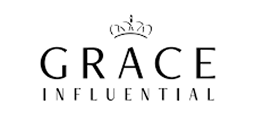Ylang-ylang: A Floral Elixir
The Reverie contributor and perfume historian, Dimitri Dimitriadis, unravels the secrets and fascinating history of a flower that reigns supreme: ylang-ylang. Here he explores the essence, elegance and allure contained within the delicate petals of this botanical gem.
Ylang-ylang is an exotic flower with a unique scent profile that has had many uses over the centuries. Its name comes from the Tagalog language, where it is known as "ilang-ilang," meaning "flower of flowers." The fragrant essential oil extracted from these flowers has been used for its medicinal and therapeutic properties for millennia. It boasts antiseptic and anti-inflammatory benefits, and in the past, has been used to treat typhus, malaria, and dermal and gastrointestinal infections.

Ylang-ylang trees are native to tropical regions, primarily Indonesia and the Philippines in Southeast Asia, but they can also be found in other parts of the world such as India, Africa, and the Caribbean. The cultivation of ylang-ylang requires special care and attention due to its delicate nature. The flowers must be harvested at just the right time and handled with care during extraction to ensure that their therapeutic properties and spectacular aroma remains intact. The first modern use of this flower in perfumery came around 1860 when a German sailor named Albertus Schwenger set up a distillery in the Philippines when he fell in love with the exotic flower. It was traded and exported to Europe where it found its way into the palettes of the best perfumers on the continent. It has been a popular raw material ever since due to its unique olfactory profile: a scent which embraces notes of jasmine, tuberose, banana, fresh custard and spicy carnation. Whilst a remarkable oil when used in isolation, it is often blended with other essential oils to create unique and complex compositions.
Ylang-ylang has been used in some of the world's most famous perfumes, such as Chanel No. 5, Dior's J'adore, and Guerlain's Samsara. It brings a warm, sun-soaked floral quality to these perfumes, which adds opulence and sophistication to their overall scent profile. It also helps to balance out other ingredients, making them more complex and interesting. By understanding how ylang-ylang works in combination with other notes, perfume makers can create incredible perfume narratives that stand out from the rest.
Ylang-ylang furnishes a fragrance with a sense of the tropics... a spectacular "otherness" which speaks of luxury and of far-flung destinations; of islands brushed with equatorial trade winds. The “flower of flowers” is used by the best of the best: it is a material that immediately elevates a perfume, as much as it enchants. Grace de Monaco's exquisite fragrance family uses ylang-ylang oil par excellence. In “Promenade sur le Rocher” it brings a solar complexity and golden warmth, in “Danse Étoilée”, a sense of fond reminiscence...a beauteous exhalation that resides in the register of the divine and in “Ombre Sereine”, a complex floral note that imparts harmony and sophistication. The distinctive beauty of ylang-ylang’s large, curved petals is artistically expressed in our silks collection, particularly in The Riviera design.
There is no wonder, then, that ylang-ylang has harnessed the hearts of men and women since the beginning of time. Its beauty is otherworldly, and its singularity is truly something to be celebrated.
Read about Prince Grace’s “World of Flowers” here and how her floral designs inspired our silks collection here.
Dimitri Dimitriadis is a perfumer, perfume writer, speaker, curator and historian based in Perth, Western Australia. He has designed and hosted perfume exhibitions and frequently holds speaking and educational engagements for luxury fragrance brands and independent perfumeries across Australia. When he is not burying his nose in a fragrance tome, you’ll find him trawling the antique markets on weekends; having a leisurely game of tennis; or adding to his vast 80’s heavy metal vinyl collection. Follow Dimitri on Instagram @eaudorangeverte and discover more of his writing here, here, here and on his blog The Fumery













